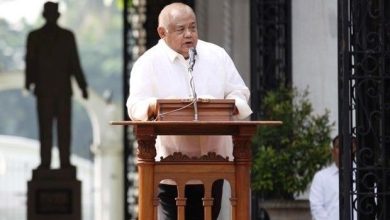Duolingo creates English course for native Tagalog speakers

TO MAKE learning the English language more accessible — and free — language learning app Duolingo has launched an English course for Tagalog speakers.
The English for the Tagalog Speakers Course is designed with the beginner English speaking Filipino in mind. It aims to make learning basic English fun through its gamification approach of arranging the English words to fit the translation of the Tagalog sentence.
The course is also aimed at providing free and accessible education to learn the English language.
“We are aware that Filipinos English proficiency is already high. But we’re also aware that not everyone in the Philippines has equal access to learn English, so we wanted to develop this course and offer it for free,” Haina Xiang, Marketing Director of Duolingo, said in an online press launch on March 15.
According to the English Proficiency Index (EPI) published in Nov. 2021, the Philippines ranked 18th out of 112 countries whose population are non-native English speakers. The EPI score is “high proficiency” which is considered adequate for tasks such as managing work presentations, understanding TV, and reading newspapers.
Founded in 2012, Duolingo offers over 100 language courses across 41 distinct languages, from Spanish, French, German, and Japanese to Navajo and Yiddish. It also offers courses for endangered languages such as Zulu, Xhosa, Maori, and Haitian Creole; and fictional languages such as Valyrian (the ancient language spoken by the characters in Game of Thrones). In 2013, the app was awarded the “iPhone App of the Year.” Duolingo has been downloaded over 500 million times and counting.
According to data released by the app, the monthly active user (MAU) growth of Duolingo in the Philippines is 32% year-on-year. The peak studying time for Filipino learners is 9-10 p.m., with an average studying time of 15 minutes a day. Currently, 20% of Filipinos on Duolingo are learning Japanese, 19% are learning Korean, and 16% are learning Spanish.
Ms. Xiang added that the English for the Tagalog Speakers Course focuses more on conversational topics relating to family, food, and hobbies.
“All of our course developers are native Tagalog speakers, so they are very familiar with local insights,” she said.
The Duolingo courses are developed based on the Common European Framework of Reference for languages (CEFR), the international standard for language learning. The course is divided into different levels — A1, A2, B1, and B2. A is for beginners, and B is for intermediate learners.
“Based on those different levels, we divided the complexity and difficulties of the language learning,” Ms. Xiang said.
“When you come into Duolingo, we have placement test to access your level. Based on that result, they match you to the right level of where you are right now, and you can start from there,” she said. “This framework helps us make sure of what the users need in the content.”
Plans to create courses for Philippine native languages have yet to be considered.
“We are starting with the English course first and we will see the impact of that. We have other course development plans, once we confirm, we will announce it,” Ms. Xiang said. — Michelle Anne P. Soliman




